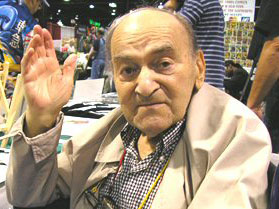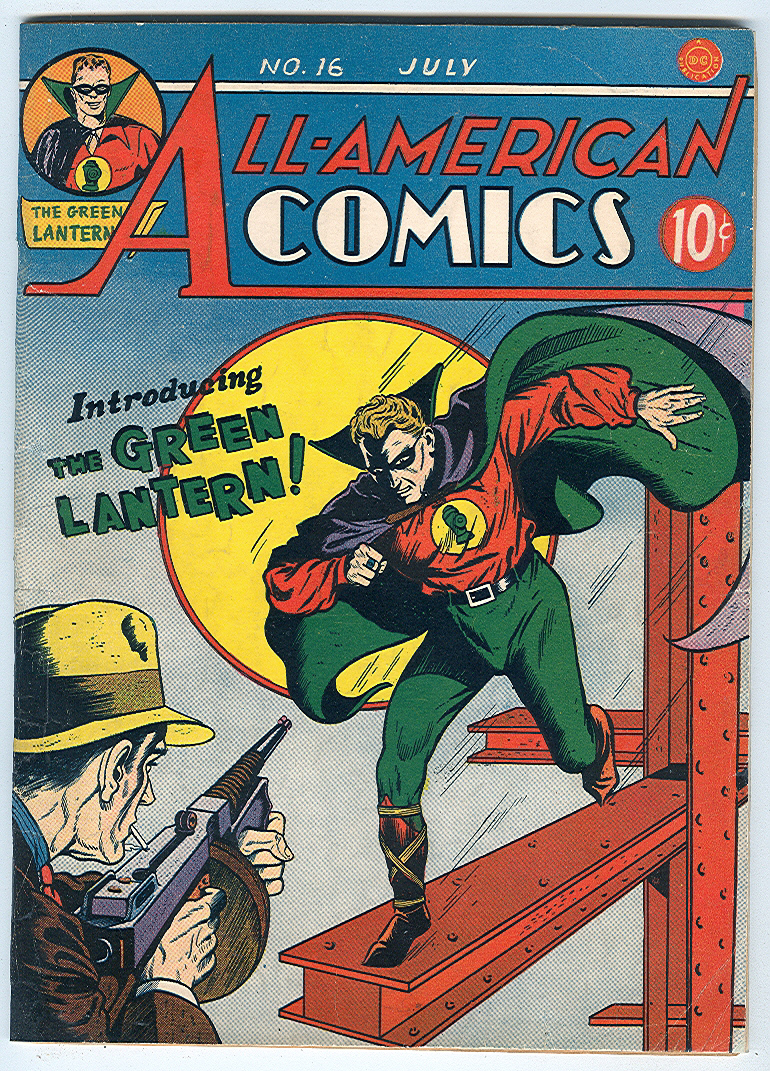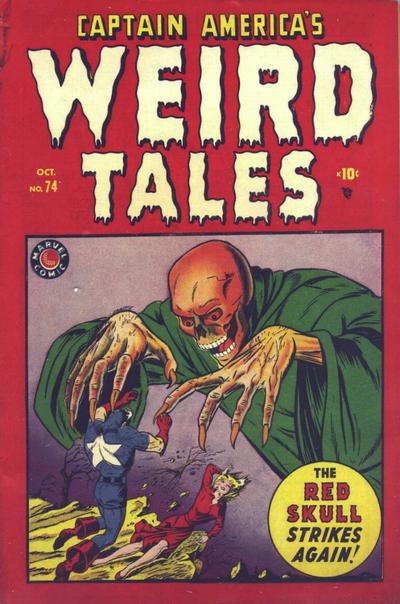The focus of this month’s Those Who Came Before is a man whose career reached beyond comics. His work has been seen by many people, whether they read comics or not. Martin Nodell is the man to thank for many creations, including one of our favorite ring powered characters of all time. Read on to find out exactly why we have green lanterns policing space in the DC Universe.
Nodell was born in 1915, in Philadelphia. He got into comics after attending art school at the Art Institute of Chicago, and later, at the Pratt Institute in New York City. He began his career in 1938 as a freelancer, a rather exciting time for the industry. Within a short time he ended up working for one of the companies that would later become DC Comics.
Martin Nodell met his future wife, Carrie, at Coney Island in 1941, and they were married within months. They had two sons, six grandchildren, and three great-grandchildren. I wonder if the kids appreciate the character that Nodell created? He and Carrie were married for 63 years, until her death in 2004. That’s 63 years of marriage, quite an accomplishment. Martin Nodell lived 91 years, until 2006.
Nodell was an illustrator, and he didn’t confine himself to working on comics, even after a big success in the medium. He used his talents to create some beloved and lasting images. Without a doubt, the creations of Martin Nodell will continue to live on for a long time to come.
Green Lantern
Okay, how many of you like the Green Lanterns? I know I do. When we think of Green Lantern, the name Martin Nodell is probably not the first name we associate with the character. Nor would it be the second or third, and so on. At least it wasn’t for me, but that may all change from here on out. We have our much loved Green Lantern character, thanks to Mr. Nodell, and the New York subway system.

Way back in 1940, Nodell was trying to come up with a new character, and he found a few sources of inspiration. First we have the name, Green Lantern. While on his way home in one of New York’s subway stations, Nodell noticed a trainman waving a lantern along the tracks.
I picked out the name from the train man on the tracks who was waving a lantern, going from red to green…. Green meant go and I decided that was it.
– Martin Nodell
There were two lanterns that they used, one green and one red. They served as traffic lights for the trains going in and out of a subway station. I can definitely see the similarities.
Then there was the costume for our eventual Green Lantern. For this Nodell drew from Greek mythology, and I like what he came up with. So, with the symbol of the lantern down, the costume designed, where did the ring come from?
You may wonder, why of all things to use, did Nodell select a ring? Well, for that we have 19th century German composer Richard Wagner to thank. His work, The Ring of the Nibelung, a four part drama, featured a ring of great power. The plot of these dramas is basically a fight over a magic ring that would bring its bearer domination over the world. Wagner’s work also inspired another ring-fueled drama, The Lord of the Rings by J. R. R. Tolkien. Thank you Mr. Wagner, truly epic stuff.
Alan Scott, the original Green Lantern made his debut in All-American Comics #16, in July of 1940. Nodell teamed with Bill Finger on Green Lantern stories for the next seven years. Green Lantern would appear in All American Comics, and All Star Comics until he got his very own book in the fall of 1941, with the premier of Green Lantern #1. He penciled and did a lot of inking under the pseudonym Mart Dellon. Why a pen name?
A lot of us did that back then. We thought of comics as a way to earn money before we moved on to real illustration work. If you used a fake name, you could disavow the work. Now, of course, I don’t want to.
– Martin Nodell
It’s such a shame that comics were viewed this way. What’s more, it was at a time when things couldn’t have been more exciting. You had the birth of great characters like Superman, Batman, Captain Marvel, Blue Beetle, Captain America, Green Lantern, Flash, Namor, Wonder Woman, and many more. Those were truly pioneering times, and despite what they might have thought about it, a fantastic time to be involved in comics.
Timely Comics
In 1947, after 25 issues of Green Lantern, Nodell went to work for Timely Comics, the forerunner of Marvel Comics. There he did pencils on Captain America, the Sub-Mariner, and the Human Torch. During this time he also did some animation work on industrial training films. He didn’t do too many covers during his stint with Timely. However, there are at least two well known covers that, despite not always receiving printed credit for his work, historians have confirmed that he did illustrate.
Life after comics
In 1950, with interest in superhero comics waning, Nodell went into advertising. The pay was better, and more regular. This was rather important with a family to care for. He did well in this new field, though he was still using his illustrating skills.
Over the course of his career, he created a few well known characters, such as the Exxon Tiger. In 1965, he contributed to the creation of the Pillsbury Doughboy. Perhaps almost as well known as his Green Lantern, who doesn’t know that marsh mallow-like little guy with his peculiar little giggle.
Nodell retired from advertising in 1976, but he didn’t completely give up working.
A Return to Comics
Throughout the years after leaving Timely, Nodell did a little bit of comic work here and there. He did pencils in Eerie #14 (1951), and City of the Living Dead (1952). He did some work for DC once again in the eighties. A 13 page puzzle and activity section in Super Friends Special #1 in 1981, and also illustrating Harlequin in Who’s Who: The Definitive Directory of the DC Universe #10 in 1985.
His final work for DC was also his final work on Green Lantern. In Green Lantern Volume 3 #19, he did pencils on Alan Scott, the original Green Lantern, for the last time. He also penciled Gnomebody in Harlan Ellison’s Dream Corridor Quarterly #1, published by Dark Horse in August of 1996.
The Golden Age
I know that the “ages” in comics denote time periods, but I like what was happening back then. The Golden Age fits for back in the late thirties and early forties. Martin Nodell fits there too. The man’s work was certainly golden. Would all the Hal Jordan fans out there hunt me down and burn me at the stake if I offered the idea of Alan Scott being the greatest Green Lantern of all time? Well, I’ll let you all figure that out for yourselves. However, like so many of the great artists from that time, he’s gone. Fortunately for some of his fans looking to meet the man behind the lantern, he did appear at conventions and shows later in life, even traveling the circuit with his wife.
The Impact a Comic can Have
At times I wonder how comic books look to those who only read literature. Do they look down their noses at comics and their readers? Do they believe that we can’t or don’t like to read, and pick up comics for the pictures? I can’t say what kind of an influence the first comic I ever read had on me, it was The Infinity Gauntlet and it was awesome! I mean, I don’t know if my reading ability would’ve developed the same way it did had I not read that book. I would like to think however, that it helped get me on the road to becoming a good reader. Reading is such an important ability to have, and to do it skillfully, that’s a bigger plus. Can a comic book really help with that? Some might laugh at the very thought of such an idea. Martin Nodell’s son, Spencer, would have an answer for them.
There were myriad of fans who would come up to my dad and would say ‘Green Lantern got me to read’ or ‘Green Lantern got me to do something in my life…
– Spencer Nodell
I’ll thank Martin Nodell as well, for giving us a character that spawned one of the most far reaching and enjoyable cast of comic heroes and villains that we have today.
Eli Anthony
eli@comicattack.net









Wow, how awesome. What an impact this fellow had on society. I LOOOOVE that Weird Tales with Cap by the way!
Thanks for the heads up Eli this was a great read!
Billy, I love that Weird Tales cover too. Captain America meets horror comics!
Pingback: uberVU - social comments
This is great Eli. Thanks for giving Nodell the spotlight!